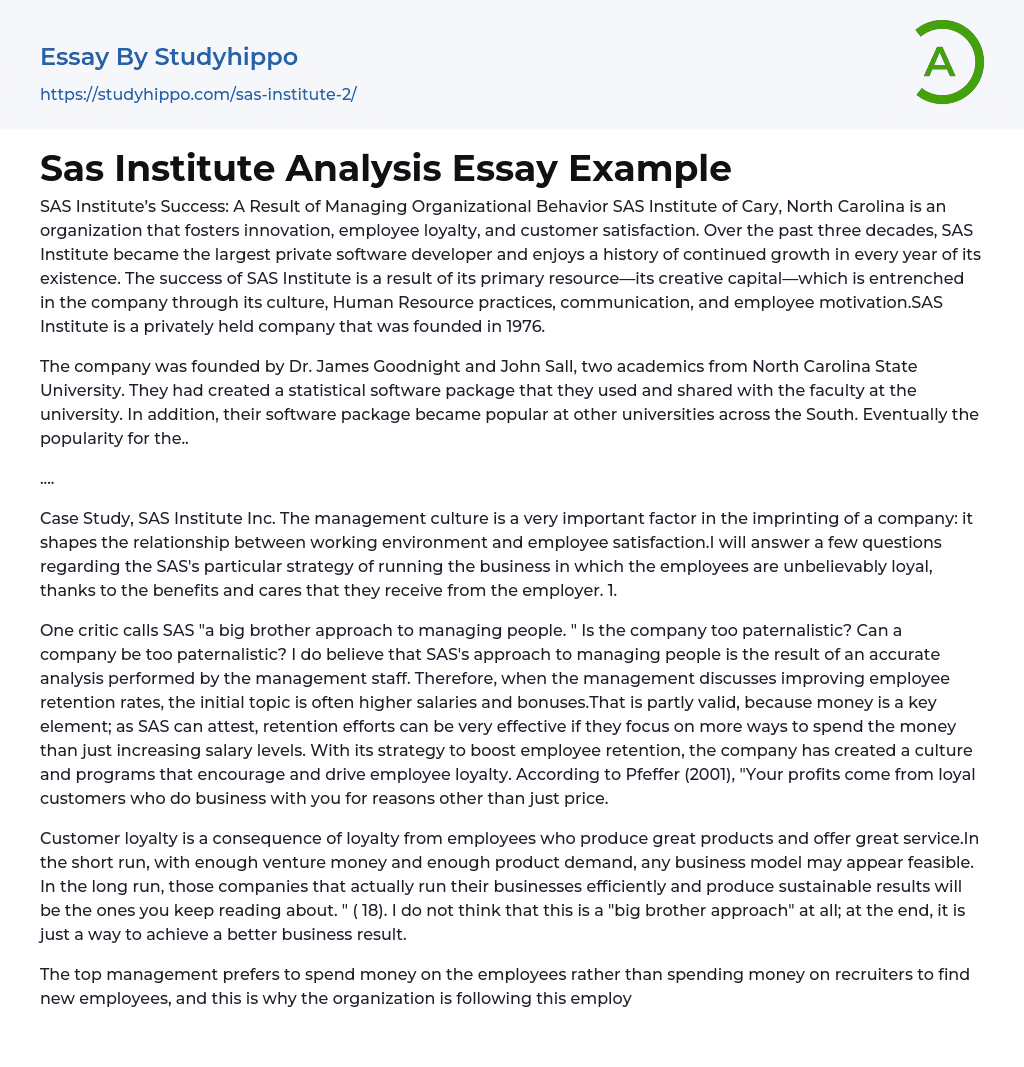The key to the success of SAS Institute, a privately owned company established in 1976 in Cary, North Carolina, lies in its efficient management of organizational behavior. The company's focus on innovation, employee retention and customer contentment has resulted in sustained expansion over three decades. At SAS Institute, innovative capital is the primary asset that is nurtured by promoting a culture of Human Resource practices, effective communication and staff motivation.
The origins of the company can be traced back to Dr. James Goodnight and John Sall, academics from North Carolina State University who developed a statistical software package. Initially, they used and shared the software with fellow faculty members at the university, but soon it gained popularity at other Southern universities as well.
....
In this case study on SAS Institute Inc., the significance of the management culture in shaping
...the relationship between workplace environment and employee satisfaction is emphasized. The strategy employed by SAS to run their business results in exceptionally loyal employees who benefit from the care and perks provided by their employer. I will address several questions related to this strategy.
According to a critic, SAS's management style is reminiscent of a big brother figure. This raises the question of whether a company can be excessively paternalistic. However, I believe that SAS's management staff has conducted a thorough analysis, leading to their approach to managing employees. When discussing ways to increase employee retention rates, the management primarily focuses on financial incentives, such as offering higher salaries and bonuses. While money is essential, SAS has discovered that employee retention is also possible through other means beyond just salary levels. By implementing programs and creating a culture
that promotes employee loyalty, SAS has successfully improved their employee retention rates. As Pfeffer (2001) noted, having loyal customers who are not solely motivated by price is a significant source of profits.
According to the author, customer loyalty stems from employees who provide excellent service and create quality products. While a business model may appear viable in the short term with sufficient funding and demand, long-term success is determined by companies that operate efficiently and produce sustainable outcomes. The author does not view this as a controlling method but rather a means to achieve better business outcomes. (18)
The organization follows a policy of prioritizing employee investment over recruitment expenses, as preferred by top management.
- Being A Leader essays
- Servant Leadership essays
- Leadership Experience essays
- Leadership Qualities essays
- Culture essays
- Social Control essays
- Citizenship essays
- Social Justice essays
- Caste System essays
- Social Responsibility essays
- Socialization essays
- Deviance essays
- Modern Society essays
- Popularity essays
- Civil Society essays
- Community essays
- Female essays
- Filipino People essays
- Igbo People essays
- Indigenous Australians essays
- Indigenous Peoples essays
- Minority Group essays
- Social Institution essays
- Men essays
- The nation essays
- Middle Class essays
- Social Norms essays
- Discourse Community essays
- Popular Culture essays
- Car Culture essays
- American Culture essays
- Mormon essays
- Indian Culture essays
- Mexican Culture essays
- Pop Culture essays
- Cultural Differences essays
- Culture Shock essays
- Different Cultures essays
- Profession essays
- Labour Economics essays
- Occupational Safety And Health essays
- Pension essays
- Salary essays
- Strike Action essays
- Wage essays
- Career essays
- Workplace essays
- Homeless essays
- Working Together essays
- Career Path essays




